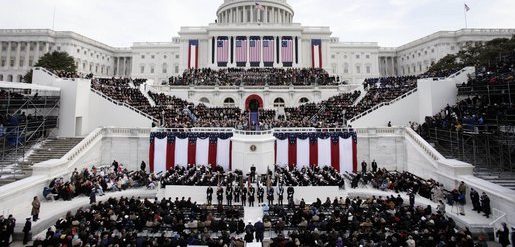No matter who is elected, in just over 250 days a new President will take office. Plans are already underway to ensure he or she hits the ground running. But smooth transitions are not easy. Traditionally a period of adjustment, the first months of a new administration are often difficult as the administration finds it challenging to effectively promote their policy agendas at the beginning of a term.
Dan Chenok, Executive Director of IBM Center for the Business of Government, sat down with Christopher Dorobek on DorobekINSIDER program to discuss ways to make the impending transition smoother and more efficient for the incoming administration. His perspectives stem from his contributions to IBM Center for Business and Government and Partnership for Public Service’s recent report, “Enhancing the Government’s Decision Making: Helping Leaders Make Smart and Timely Decisions,” which provides recommendations to the new administration’s transition team.
Chenok explained that new administrations are stuck in a catch-22 because their administration is most powerful in those first few months – yet at the same time, in those months, they’re the most inept. On the flip side, as their power wanes, their understanding of how to push their policy agenda starts to improve. He emphasized that, “the transition period is critical because it accelerates the ability of an administration to take advantage of the first year.”
In order to make the most of the first few months in office, Chenok insisted a new administration must establish a solid initial process to push policy. He explained that when an administration does not have to spend time making up for bad decisions made early on, they can carve a better and more effective path for the administration and country as a whole.
The IBM Center for the Business of Government and Partnership for Public Service’s report says there are four ways that the new administration should proceed in their first few months in power. The suggestions include:
- Establishing a decision framework
- Harnessing effective governmental decision processes
- Adapting decision support systems to better inform decision-making
- Developing ideas and tools to enable practical decision-making in the complex federal government
Chenok explained that the tools to make the beginning of an administration most effective apply to much more than just the budget for their policy agenda.
“It’s not just the budget,” he said. “There’s a regulatory cycle for particular regulations, and there’s an acquisition cycle that ties to agencies’ budget and spending plans, and ties to the fiscal year.” He emphasized the importance of having a comprehensive game plan to tackling policy agenda at the beginning.
“It’s important to think early about the process by which key priorities are advanced in terms of decisions that are made to implement them,” he added. In particular, it’s important “to think about who needs to be in the room, what information they need and once they make a decision, how does that decision get rolled out so that it’s implemented quickly.”
For more details on how the new administration can work to make the transition as smooth as possible check out the Partnership for Public Service and IBM Center for the Business of Government’s report “Enhancing the Government’s Decision Making: Helping Leaders Make Smart and Timely Decisions.”
